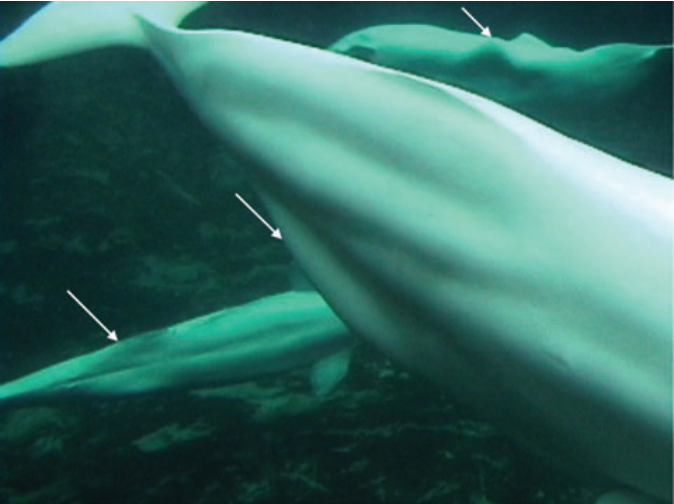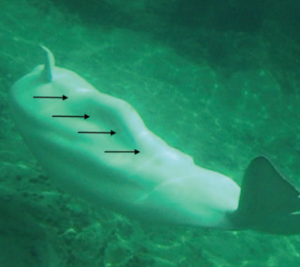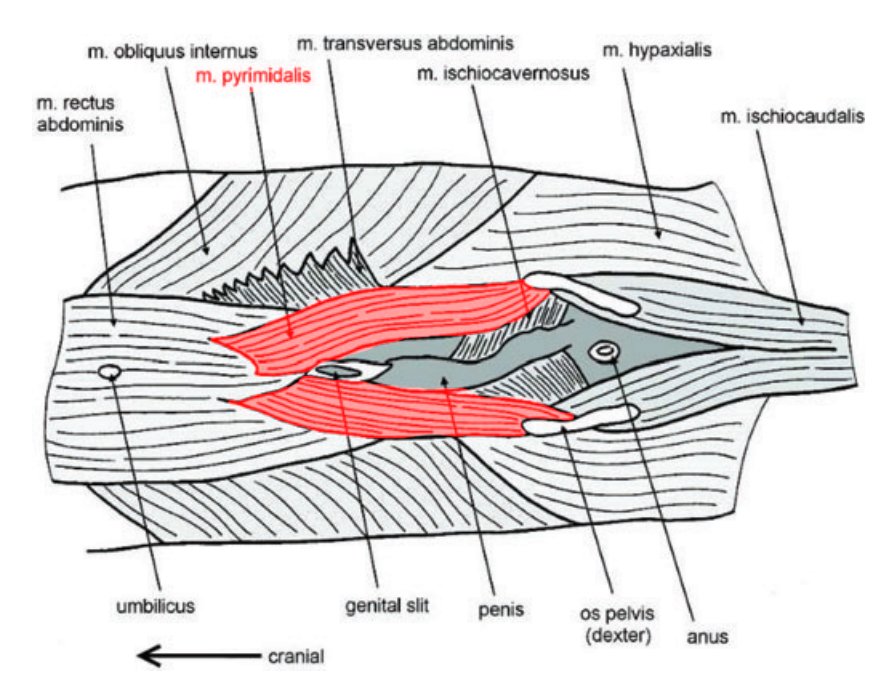
Beluga whales and advanced aircraft may have something in common, and it’s all thanks to love handles. In humans, love handles are deposits of fat over the hips and waist. Belugas also have midline paunches, and for a long time no one paid any attention to these loafs. “People initially thought the abdominal fat came from captivity” says marine mammal expert Dr. Alex Werth, “but we saw it (as others have) in wild animals as well.” It’s a small mystery, but it got Alex curious.
To start, Alex and colleague Thomas J. Ford Jr. analyzed nearly six hours of footage of both captive and wild beluga whales, and right from the start they noticed something strange. One minute a beluga had two rows of meter long, 10-14 cm high love handles, and the next minute they’d be gone. Nothing but smooth underbelly. Where did the love handles go? A surprising pattern began to emerge. When a whale rolled or turned upside down, their love handles would pop out. Was this just due to wrinkling fat, in the same way a slouching man’s beer belly sticks out? Or was there something more? They couldn’t be sure. So they traveled to a desolate frozen coast, in search of belugas.
The Alaska Inupiat peoples, who are granted special permission to hunt belugas, allowed Alex and Thomas to examine the bodies of several whales, and what they found surprised them. Belugas have love handle muscles. This special muscle pair, rarely found in other whales, called the pyrimidalis abdominis, are particularly important for raising and lowering the love handles. These muscles, in other words, actively control the pooch. So beluga love handles aren’t inert jelly rolls. Belugas actively control the height of their love handles by flexing specialized muscle groups. But why would an animal need to control their love handles?
In humans, love handles are ostensibly used to hold on during a wild ride, but have you ever used your love handles to help you steer after jumping out of an airplane or being shot from a cannon? Me neither, but Alex and Thomas think that, for belugas, these strategically placed pillows may actually help the belugas steer. In other words, belugas may be a lot like underwater airplanes.
Rockets, planes, and missiles (almost anything that shoots through air or water) have structures called “vertical stabilizers”. On airplanes these take the form of tail-fins. By resisting spinning motion, they hold the plane steady, especially during unstable conditions and turns. Alex and Thomas show that belugas deploy their love handles during these exact same kinds up unstable conditions, where extra stabilization is critical. They write that these love handles may actually act “similarly to fins” that the whales deploy only when needed. But why use love handles for stabilization at all?

Unlike many dolphins and whales, belugas lack a dorsal fin. Maybe it’s too cold to have blood running through such a thin exposed surface, or maybe it’s too dangerous to swim under ice with a dorsal fin. Whatever the reason, belugas are apparently making up for this absence with fat. Getting ready for a risky maneuver? Time to pooch the paunch. In the ever changing ice flows these whales call home, the extra stability these love handles provide may mean the difference between a clean getaway and a collision with an iceberg. Talk about a whole new reason to love love handles.
Reference
Alexander J. Werth, and Thomas J. Ford , Jr. (2012) Abdominal fat pads act as control surfaces in lieu of dorsal fins in the beluga (Delphinapterus). Marine Mammal Science. 28(4) E516-527








